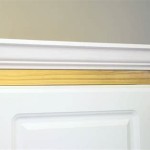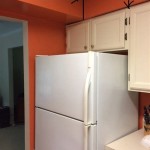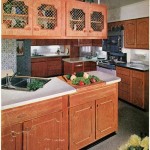Island Kitchen Cabinets: A Guide to Enhancing Functionality and Style
Island kitchen cabinets are a popular design element that adds both functionality and aesthetics to kitchens. They provide extra storage space, counter space, and a central gathering point in the heart of the home. Understanding the different types of island cabinets and the factors to consider when choosing them will enable homeowners to make an informed decision that aligns well with their kitchen design and lifestyle needs.
Types of Island Kitchen Cabinets
Island kitchen cabinets come in a wide range of styles and configurations to suit various preferences and kitchen layouts. Three common types include:
1. Base Cabinets
Base cabinets form the foundation of the island and typically house drawers and doors for storing kitchen essentials. These cabinets can be customized with different door styles, finishes, and hardware to match the overall kitchen aesthetic. Popular choices include shaker, traditional, and modern styles.
2. Upper Cabinets
Upper cabinets provide additional storage space above the base cabinets. They can be open shelves for displaying decorative items or closed cabinets for storing less frequently used items. Upper cabinets can enhance the island's visual appeal and maximize vertical space.
3. Specialty Cabinets
Specialty cabinets offer unique features and functionality beyond standard base and upper cabinets. Examples include:
- Wine racks: Ideal for storing wine bottles and displaying a collection.
- Spice racks: Organize spices and make them easily accessible.
- Pull-out pantries: Provide ample storage for pantry staples.
- Built-in appliances: Integrate appliances like microwaves, ovens, or dishwashers into the island design.
Factors to Consider When Choosing Island Kitchen Cabinets
When selecting island kitchen cabinets, several essential factors should be carefully considered:
1. Kitchen Layout and Space
The kitchen layout and available space are crucial determinants in choosing the size, shape, and configuration of the island cabinets. Measure the kitchen carefully to determine the optimal dimensions for the island and ensure adequate clearance for movement and traffic flow. Consider the layout of other kitchen elements, such as the refrigerator, sink, and stove, to ensure a well-balanced and functional design.
2. Style and Design
The style and design of the island cabinets should complement the overall aesthetic of the kitchen. Traditional kitchens may opt for classic cabinets with intricate details and ornate hardware, while contemporary kitchens may favor sleek and minimalist designs. Consider the existing cabinetry, countertops, and flooring materials to ensure harmony and continuity.
3. Functionality and Storage Needs
Island kitchen cabinets should be designed to meet the specific storage and functionality needs of the homeowners. Consider the size and frequency of use of kitchen items when determining the number and types of cabinets. For example, a family that cooks frequently may require ample drawer space for cooking utensils and pans, while a family that entertains often may prefer ample counter space and storage for serving dishes.
4. Budget and Materials
The cost of island kitchen cabinets can vary significantly depending on factors such as size, materials, and customization. Set a realistic budget and explore various options to achieve the desired look and functionality within the financial constraints. Common materials include wood, laminate, and thermofoil, each offering unique benefits and price points.
Benefits of Island Kitchen Cabinets
Island kitchen cabinets offer numerous benefits for homeowners, including:
1. Increased Storage Space
Island cabinets provide additional storage capacity, helping to declutter countertops and create a more organized kitchen environment. They can be tailored to accommodate specific storage needs, such as pantry items, cookware, or appliances.
2. Expanded Counter Space
Island cabinets offer a significant amount of counter space, making it easier to prepare meals, entertain guests, or perform other tasks. The additional counter space also creates a more functional and efficient workspace in the kitchen.
3. Central Gathering Point
An island with cabinetry can serve as a central gathering point in the kitchen, providing space for casual conversation, snacking, or meal preparation. It can create a warmer and more inviting atmosphere for family and guests.
4. Enhanced Kitchen Aesthetics
Island kitchen cabinets can elevate the overall aesthetic of the kitchen by adding visual interest and creating a focal point. The choice of style, materials, and finishes can significantly impact the kitchen's design and personality.
By carefully considering the factors outlined above, homeowners can select island kitchen cabinets that enhance both the functionality and aesthetics of their kitchens, creating a space that is both practical and stylish.

5 Features To Include For The Perfect Kitchen Island

Kitchen Island Designs As Unique Your Home Cliqstudios Cabinets

White Cabinets With A Gray Kitchen Island Homecrest

Off White Cabinets With Black Kitchen Island Decora

Kitchen Island Does It Work With Your

40 Kitchen Island Ideas To Upgrade Your Space Cabinet Kings

A Diy Kitchen Island Step By Guide

7 Tips For A Better Kitchen Island Edgewood Cabinetry

Functional Kitchen Island Ideas Bertch Cabinets

Your Kitchen Island Does Not Have To Match Cabinets Fairview Millwork
Related Posts








